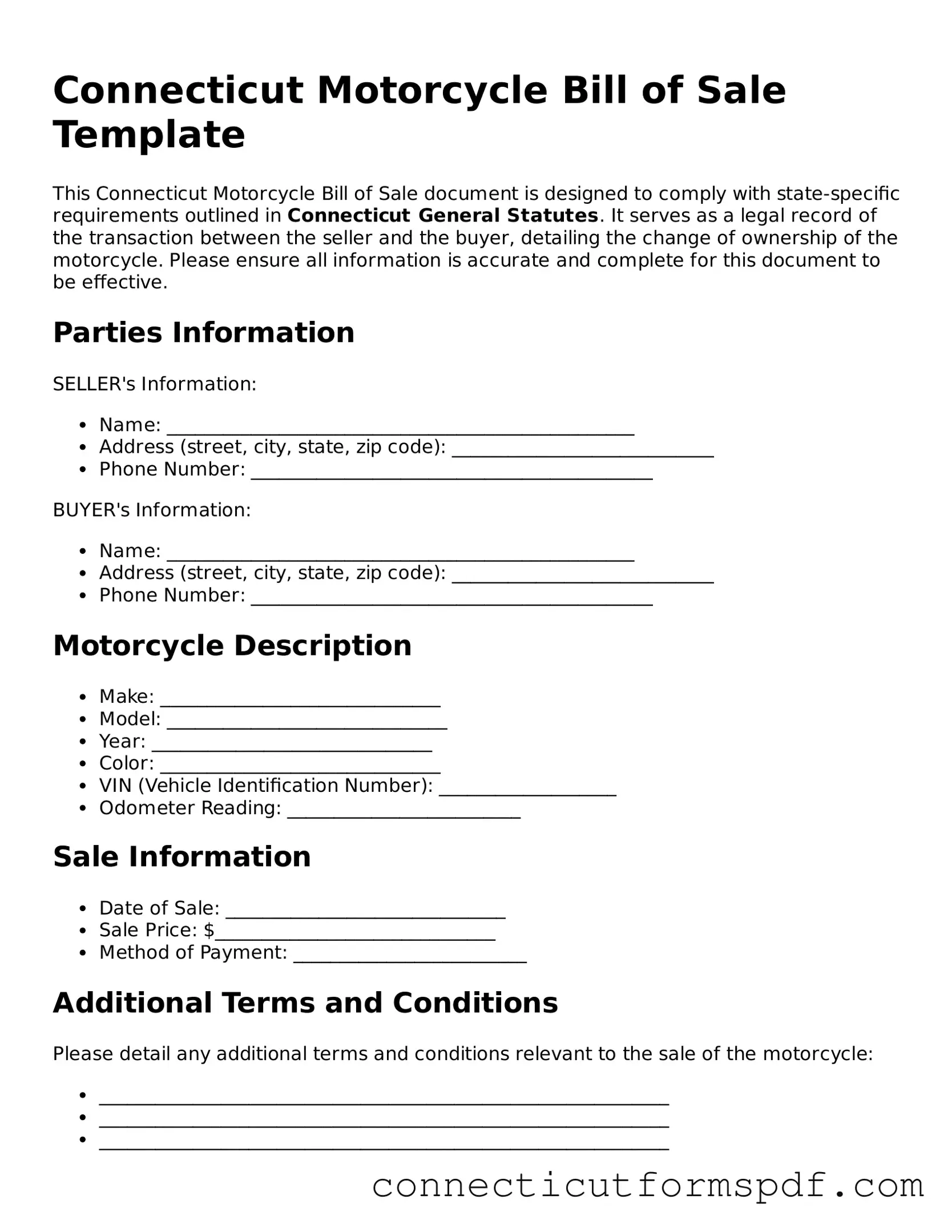Connecticut Motorcycle Bill of Sale Template
This Connecticut Motorcycle Bill of Sale document is designed to comply with state-specific requirements outlined in Connecticut General Statutes. It serves as a legal record of the transaction between the seller and the buyer, detailing the change of ownership of the motorcycle. Please ensure all information is accurate and complete for this document to be effective.
Parties Information
SELLER's Information:
- Name: __________________________________________________
- Address (street, city, state, zip code): ____________________________
- Phone Number: ___________________________________________
BUYER's Information:
- Name: __________________________________________________
- Address (street, city, state, zip code): ____________________________
- Phone Number: ___________________________________________
Motorcycle Description
- Make: ______________________________
- Model: ______________________________
- Year: ______________________________
- Color: ______________________________
- VIN (Vehicle Identification Number): ___________________
- Odometer Reading: _________________________
Sale Information
- Date of Sale: ______________________________
- Sale Price: $______________________________
- Method of Payment: _________________________
Additional Terms and Conditions
Please detail any additional terms and conditions relevant to the sale of the motorcycle:
- _____________________________________________________________
- _____________________________________________________________
- _____________________________________________________________
Signatures
It is imperative that both the seller and the buyer sign this document as a confirmation of their agreement to the terms of the sale. By doing so, both parties acknowledge that the information provided is accurate to the best of their knowledge and that the seller is legally transferring ownership of the motorcycle to the buyer.
Seller's Signature: __________________________________ Date: _________
Buyer's Signature: ___________________________________ Date: _________
This document should be retained by both the seller and the buyer for their records and, if applicable, for the purpose of registration, tax payment, and other legal requirements.
